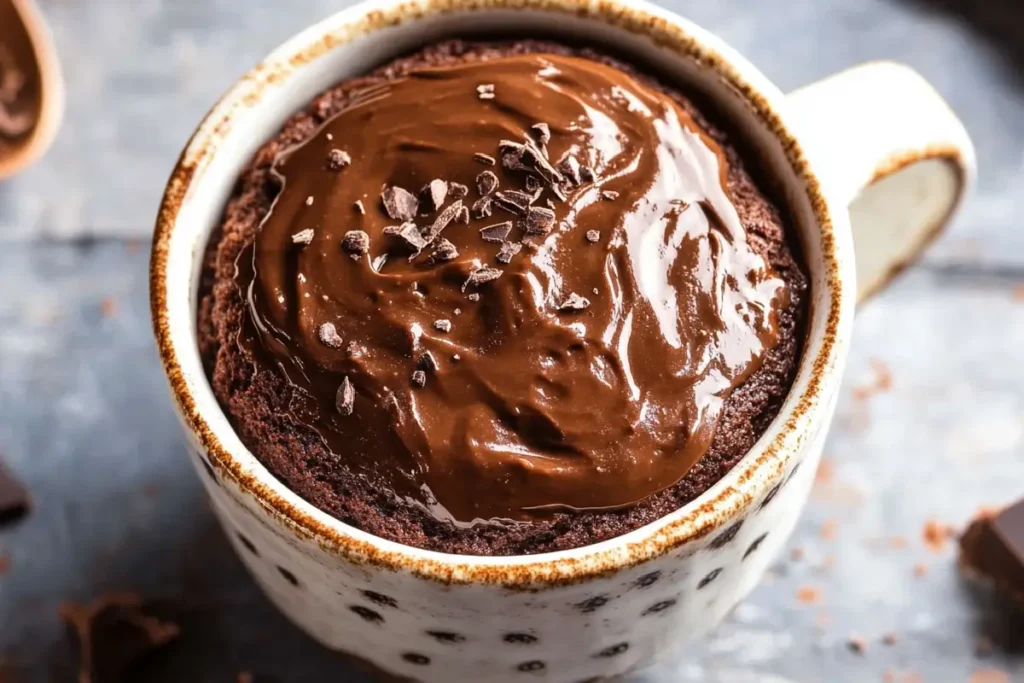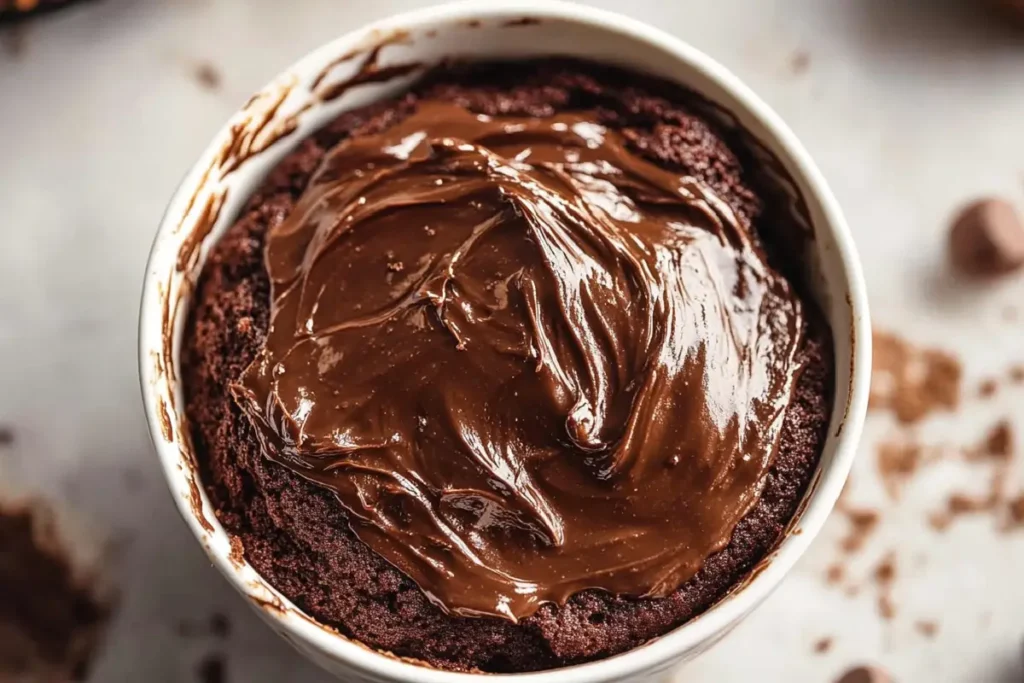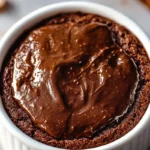Table of Contents: Why Do My Mug Cakes Never Work?
Introduction: Why Do My Mug Cakes Never Work?
Craving a warm, gooey chocolate cake in minutes but always end up with a sad, rubbery mess? You’re not alone! Mug cakes promise a speedy, single-serving dessert but often leave us scratching our heads (or crying into our mugs). The truth is, these microwave miracles are almost foolproof—if you know the secrets.
Did you know mug cakes exploded in popularity during the pandemic as the ultimate comfort food hack? They’re faster than ordering delivery and cheaper than therapy. But here’s the kicker: Most recipes skip the tiny details that make or break your cake-in-a-cup. Unlike my foolproof 5-Minute Chocolate Lava Cake, mug cakes demand precision.
But don’t toss your mug yet! Today, I’ll unravel why your mug cakes flop and share 3 simple fixes to guarantee fluffy, moist results every time. Ready to turn “meh” into magic? Let’s dive in!
What is a Mug Cake?
Is it a cake? A mug? Or a magical dessert hybrid? Let’s settle this: A mug cake is exactly what it sounds like—a single-serving cake baked in a mug using your microwave. No oven, no fancy tools, just 5 minutes between you and chocolatey bliss.
But why “mug” cake? Well, someone once said, “The way to a person’s heart is through their stomach—but the way to their soul is through a dessert ready in 90 seconds.” (Okay, I made that up, but you get the idea.) It’s the ultimate lazy-day treat.
Still skeptical? Grab your favorite mug, and let’s fix those baking fails once and for all!
Why You’ll Love This Mug Cake

- Speed Demon Approved: Craving cake at midnight? This recipe takes 5 minutes—microwave included.
- Budget-Friendly Bliss: Skip the bakery markup! A mug cake costs pennies with pantry staples.
- Customizable Chaos: Add chocolate chips, peanut butter swirls, or rainbow sprinkles. It’s your cake—no judgment here.
Compared to my Microwave Brownie, this recipe is lighter, fluffier, and perfect for when you need a quick solo treat.
Ready to become a mug cake MVP? Let’s bake!
How to Make a Mug Cake
Quick Overview
- Time: 5 minutes
- Key Perks: No oven, minimal cleanup, endlessly customizable.
- Hero Ingredient: Cocoa powder for that rich, fudgy vibe.
Key Ingredients
(Include a placeholder image of ingredients here)
- 4 tbsp flour
- 2 tbsp sugar
- 1 tbsp cocoa powder
- ¼ tsp baking powder
- 3 tbsp milk (or almond milk)
- 1 tbsp oil (vegetable or coconut)
- 1 tsp vanilla extract
- Optional: Chocolate chips, peanut butter, or a caramel drizzle.
Step-by-Step Instructions
- Mix Dry Ingredients: In your mug, whisk flour, sugar, cocoa, and baking powder.
- Add Wet Ingredients: Pour in milk, oil, and vanilla. Stir just until combined—overmixing = rubber!
- Microwave: Cook 60-90 seconds (stop at 60 to check). Top with ice cream and devour!
What to Serve With Mug Cakes
- Classic Combo: Vanilla ice cream melting into warm cake.
- Fancy Twist: Fresh berries + whipped cream.
- Drink Pairing: Cold milk or a caramel latte.
Top 3 Fixes for Perfect Mug Cakes
- Measure Like a Pro: Too much flour = dry hockey puck. Use measuring spoons!
- Mix Gently: Stir until just combined. Lumps are okay—they prevent toughness!
- Nuke Wisely: Microwaves vary. Start at 60 seconds, then add 10-second bursts.
Storing and Reheating Tips
- Fresh is Best: Mug cakes are meant to be eaten immediately.
- In a Pinch: Cover and refrigerate for up to 24 hours. Reheat 10-15 seconds.
FAQ: Why Do My Mug Cakes Never Work?

1. Why is my mug cake rubbery?
Ah, the dreaded rubber texture! This happens when you overmix the batter or overcook it. Stir just until ingredients combine (lumps are fine!), and microwave in short bursts.
2. Can I make a mug cake gluten-free or vegan?
Absolutely! Swap regular flour for 1:1 gluten-free flour, and use plant-based milk (like almond or oat) + a flax egg (1 tbsp flaxseed + 2.5 tbsp water).
3. Why does my mug cake explode in the microwave?
Your mug might be too small! Use a 12-oz mug to give the batter room to rise. Also, avoid overfilling—stick to the recipe’s measurements.
4. Can I bake a mug cake in the oven instead?
Sure! Bake at 350°F (175°C) for 15-18 minutes. But let’s be real—the microwave is faster. 😉
5. Can I double the recipe?
Yes, but split it into two mugs. Doubling in one mug leads to uneven cooking (and a potential lava-spill disaster).
6. Why does my cake taste dry?
Over-measuring flour is the #1 culprit. Spoon flour into your measuring spoon—don’t scoop! Add a splash of milk if the batter feels thick.
7. Can I freeze mug cake batter?
Not recommended. Mug cakes are meant for instant gratification! Mix fresh batter each time—it takes 2 minutes, promise.
Conclusion: Why Do My Mug Cakes Never Work?
Mug cakes shouldn’t be a gamble. With these 3 fixes, you’ll nail that fluffy, decadent texture every time. Got a microwave? Then you’ve got dessert.
Craving more? Try my 3-Minute Cookie in a Mug next—because why stop at cake?
Print
Amazing Mug Cakes
- Total Time: 5 minutes
- Yield: 1 serving 1x
- Diet: Vegetarian
Description
Craving cake in 5 minutes? This foolproof mug cake recipe solves rubbery, dry disasters with 3 simple fixes! Customize with chocolate chips, peanut butter, or caramel for a warm, single-serving treat.
Ingredients
- 4 tbsp all-purpose flour
- 2 tbsp granulated sugar
- 1 tbsp unsweetened cocoa powder
- ¼ tsp baking powder
- 3 tbsp milk (dairy or plant-based)
- 1 tbsp vegetable oil (or melted coconut oil)
- 1 tsp vanilla extract
- Optional add-ins: 1 tbsp chocolate chips, peanut butter, or caramel drizzle
Instructions
-
Mix dry ingredients: In a 12-oz mug, whisk flour, sugar, cocoa powder, and baking powder.
-
Add wet ingredients: Pour in milk, oil, and vanilla. Stir just until combined (small lumps are okay!).
-
Microwave: Cook on high for 60 seconds. If needed, add 10-second bursts until set (max 90 seconds).
-
Serve: Top with ice cream or sprinkles and enjoy warm!
Notes
-
Don’t overmix! Stir until just combined to avoid toughness.
-
Microwave wattage varies: Start at 60 seconds to prevent overcooking.
-
Dietary swaps: Use gluten-free flour or plant-based milk for allergies.
-
Storage: Best eaten fresh, but refrigerate leftovers up to 24 hours.
- Prep Time: 2 minutes
- Cook Time: 1-2 minutes
- Category: Dessert
- Method: Microwave
- Cuisine: American
Nutrition
- Serving Size: 1 mug cake
- Calories: 310
- Sugar: 22g
- Sodium: 135mg
- Fat: 11g
- Saturated Fat: 1.5g
- Unsaturated Fat: 7g
- Trans Fat: 0g
- Carbohydrates: 48g
- Fiber: 2g
- Protein: 5g
- Cholesterol: 5mg (if using dairy milk)
Keywords: mug cake, microwave dessert, 5-minute cake, chocolate mug cake

